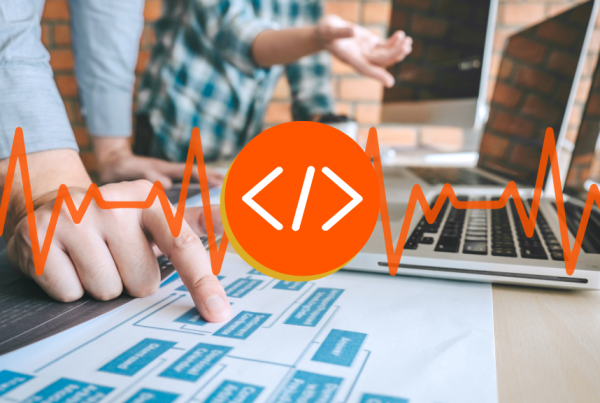The e-commerce landscape is evolving at breakneck speed, and Shopify’s 2025 updates are proving to be game-changers for businesses of all sizes. With over 150 new features and improvements, these updates aren’t just incremental changes—they’re strategic advantages that can supercharge workflows and unlock entirely new business possibilities. Let’s explore how these developments are helping businesses work smarter, not harder.
AI That Actually Does the Work
The biggest transformation comes from Shopify’s AI assistant, Sidekick, which has evolved from a helpful chatbot into what feels like having a business consultant on your team 24/7. Unlike other AI tools that just provide information, Sidekick actually executes tasks for you.
Picture this scenario: You notice sales are down this week, but you’re not sure why. Instead of spending hours digging through analytics, inventory reports, and marketing data, you simply ask Sidekick, “Why are my sales down this week?” The AI doesn’t just point to numbers—it analyzes your entire business ecosystem. It checks if you’re running low on popular products, examines whether your recent marketing campaigns are underperforming, and even considers seasonal trends. More importantly, it provides specific recommendations for improvement.
This level of analysis that once required expensive consultants or dedicated data analysts is now available instantly to every Shopify merchant. For small business owners who wear multiple hats, this represents a massive competitive advantage. You can make data-driven decisions without needing a background in analytics.
The workflow benefits are immediate and measurable. Tasks that previously took 30 minutes can now be completed in under three minutes using natural language commands. Need to create a customer segment for your holiday campaign? Just tell Sidekick what you’re looking for. Want to set up a discount code for returning customers? Describe what you want, and it handles the technical setup.
Breaking Down Global Barriers
Shopify’s expansion into 15 new European markets and Mexico represents more than just geographical growth—it’s about removing the complexity that traditionally kept smaller businesses from going global. The platform now handles local payment preferences, currency conversions, and regional tax requirements automatically.
For businesses, this means you can test international markets without the usual overhead of setting up multiple payment systems or hiring local financial experts. A boutique clothing store in Chicago can now easily sell to customers in Poland or Croatia, with Shopify handling the payment processing and compliance requirements behind the scenes.
The unified business management system is particularly powerful for growing companies. Instead of juggling separate systems for different regions or business entities, everything flows through one dashboard. This eliminates the administrative headaches that often discourage businesses from expanding internationally. You get consolidated reporting that makes it easy to see which markets are performing best and where to focus your growth efforts.
Revolutionizing Customer Interactions
The enhanced Point of Sale (POS) system is evolving how businesses handle in-person transactions. The new “ship and carry out” feature addresses a common frustration: when customers want to buy multiple items but some are out of stock in-store.
In the past, businesses had to choose between losing the sale or creating awkward workarounds. Now, customers can leave with the items that are available and have the rest shipped directly to them—all in one seamless transaction. This not only increases sales but improves customer satisfaction by eliminating the friction that often kills impulse purchases.
For retailers with both online and physical locations, this creates a truly unified commerce experience. Inventory is managed across all channels, customer data is synchronized, and sales teams have complete visibility into customer history regardless of where the interaction started.
Smarter Checkout, Better Business
The checkout improvements might seem minor on the surface, but they address real pain points that affect revenue. The ability to create automatic discounts for specific customer segments means businesses can run targeted promotions without relying on third-party apps or complex manual processes.
Imagine you want to reward your VIP customers with exclusive discounts while running a separate promotion for new customers. Previously, this required multiple systems and careful coordination to avoid conflicts. Now, you can set up both campaigns directly in Shopify, with the platform automatically applying the appropriate discount based on customer history.
The enhanced order rules for B2B customers solve another common challenge. Many businesses that serve both individual consumers and wholesale clients previously needed separate stores or complicated workarounds to enforce minimum order quantities for business customers. The new system handles this automatically, streamlining operations for blended retail models.
The Future of Shopping: AI-Powered Discovery
Perhaps the most forward-thinking development is Shopify’s integration with AI shopping platforms like Perplexity. Through the Shopify Catalog, your products can be discovered by customers who are shopping through conversational AI rather than traditional search engines.
This represents a fundamental shift in how people find and buy products. Instead of browsing websites, customers are increasingly asking AI assistants questions like “What’s the best running shoe for flat feet?” or “Find me sustainable home cleaning products.” If your products are in the Shopify Catalog, they can appear in these AI-powered recommendations, opening up an entirely new channel for customer acquisition.
The Knowledge Base app gives you control over how your brand appears in these AI conversations. You can customize the information that AI assistants share about your products, ensuring that your unique selling points and brand story come through even when customers discover you through third-party AI platforms.
Streamlined Operations for Real Results
The cumulative effect of these updates is a significant reduction in operational friction. Tasks that previously required multiple apps, manual processes, or specialized knowledge are now handled natively within Shopify. This consolidation saves money on third-party tools and reduces the complexity that often overwhelms growing businesses.
The improved developer tools mean that custom apps and integrations can be built and tested more efficiently, reducing the time and cost of adding specialized functionality to your store. For businesses that rely on custom features, this translates to faster implementation and lower development costs.
The enhanced reporting and analytics capabilities provide clearer insights into business performance without requiring expertise in data analysis. When you can easily see which products are driving profits, which marketing campaigns are working, and where your best customers are coming from, you can make better decisions about where to invest your time and resources.
Preparing for What’s Next
These updates position businesses to take advantage of emerging trends in e-commerce. As AI shopping becomes more prevalent, businesses with optimized product information and strong brand stories will have significant advantages. The global expansion capabilities ensure that when you’re ready to grow internationally, the infrastructure is already in place.
The key to maximizing these benefits is taking a strategic approach to implementation. Start with the features that address your biggest current pain points—whether that’s customer service, inventory management, or international expansion. As you become comfortable with these tools, you can explore the more advanced features that open up new possibilities for growth.
Shopify’s 2025 updates represent more than just platform improvements—they’re tools for competitive advantage in an increasingly complex e-commerce landscape. Businesses that embrace these capabilities will find themselves operating more efficiently while opening doors to opportunities that were previously out of reach.




